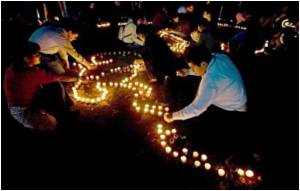A new study has pointed out that mixed-use neighbourhoods which are a combination of residential and business development may reduce the incidence of crime.

But in a sparsely populated neighborhood, increases in business-residential density actually lead to higher levels of violent crimes, at least for a while.
However after building density reaches a certain threshold, some violent crime begins to decline.
"A residential neighborhood needs more than the addition of one or two businesses to see any positive impact on violent crime," said Christopher Browning, lead author of the study and professor of sociology at Ohio State University.
"There needs to be a sufficient density of businesses and residences throughout the community to really see the benefits," he said.
Browning said the findings are important as more cities across the country consider mixed-used developments as a way to reinvigorate downtowns and blighted neighborhoods.
Advertisement
However, others believe that increasing the numbers of businesses causes residents to withdraw into their homes as they see more strangers in their communities, which makes crime more likely.
Advertisement
To explore the issue, Browning and his colleagues examined data from 184 census tracts in Columbus, Ohio.
They focused on homicide, aggravated assault and robbery crimes because they are generally more likely than some other crimes to occur in public spaces where "eyes on the street" may play a role in stopping their occurrence.
The researchers found that the number of homicides and aggravated assaults increased in low-density mixed-use neighborhoods as the density increased, but then began to decline after a threshold of density was met.
The study was supported by a grant from the National Science Foundation.
The study appears in the current issue of the Journal of Research in Crime and Delinquency.
Source-ANI









